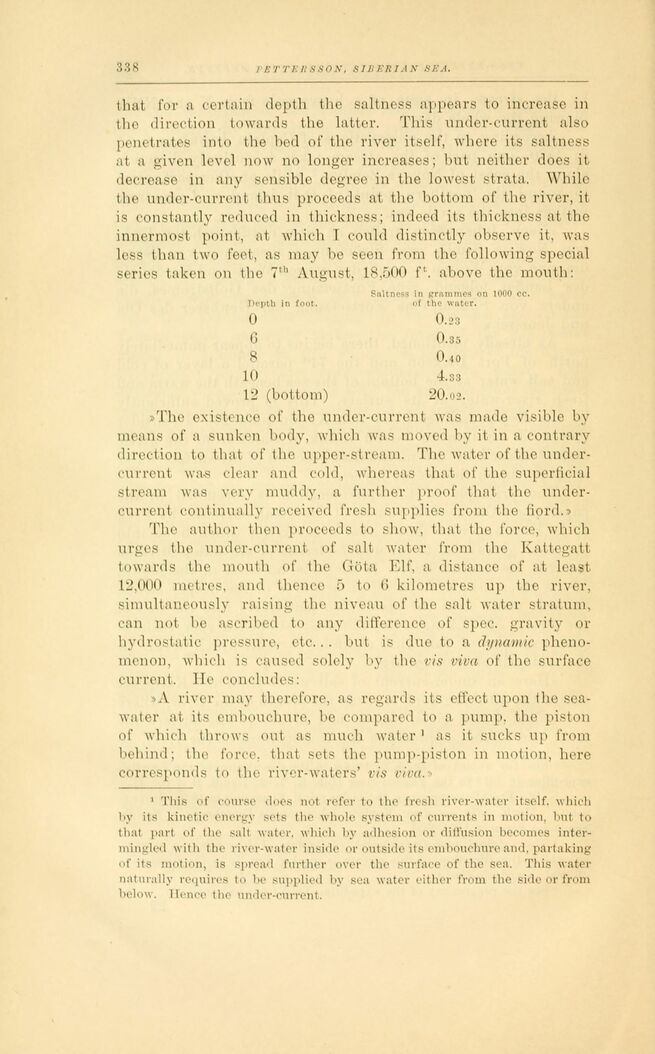
Full resolution (JPEG) - On this page / på denna sida - Sidor ...

<< prev. page << föreg. sida << >> nästa sida >> next page >>
Below is the raw OCR text
from the above scanned image.
Do you see an error? Proofread the page now!
Här nedan syns maskintolkade texten från faksimilbilden ovan.
Ser du något fel? Korrekturläs sidan nu!
This page has never been proofread. / Denna sida har aldrig korrekturlästs.
that for a certain depth the saltness appears to increase in
the direction towards the latter. This under-current also
penetrates into the bed of the river itself, where its saltness
at a given level now no longer increases; but neither does it
decrease in any sensible degree in the lowest strata. While
the under-current thus proceeds at the bottom of the river, it
is constantly reduced in thickness; indeed its thickness at the
innermost point, at which I could distinctly observe it, was
less than two feet, as may be seen from the following special
series taken on the 7th August, 18,500 ffc. above the mouth:
Depth in foot. Saltness in grammes on 1000 cc. of the water.
0 0.23
G 0.35
8 0.40
10 4.33
12 (bottom) 20.02.
»The existence of the under-current was made visible by
means of a sunken body, which was moved by it in a contrary
direction to that of the upper-stream. The water of the
undercurrent was clear and cold, whereas that of the superficial
stream was very muddy, a further proof that the
undercurrent continually received fresh supplies from the fiord.»
The author then proceeds to show, that the force, which
urges the under-current of salt water from the Kattegatt
towards the mouth of the Göta Elf, a distance of at least
12,000 metres, and thence 5 to 6 kilometres up the river,
simultaneously raising the niveau of the salt water stratum,
can not be ascribed to any difference of spec, gravity or
hydrostatic pressure, etc... but is due to a dynamic
phenomenon, which is caused solely by the vis viva of the surface
current. He concludes:
»A river may therefore, as regards its effect upon the
seawater at its embouchure, be compared to a pump, the piston
of which throws out as much water1 as it sucks up from
behind; the force, that sets the pump-piston in motion, here
corresponds to the river-waters’ vis viva.-»
1 This of course does not refer to the fresli river-water itself, which
by its kinetic energy sets the whole system of currents in motion, but to
that part of the salt water, which by adhesion or diffusion becomes
intermingled with the river-water inside or outside its embouchure and. partaking
of its motion, is spread further over the surface of the sea. This water
naturally requires to be supplied by sea water either from the side or from
below. Hence the under-current.
<< prev. page << föreg. sida << >> nästa sida >> next page >>